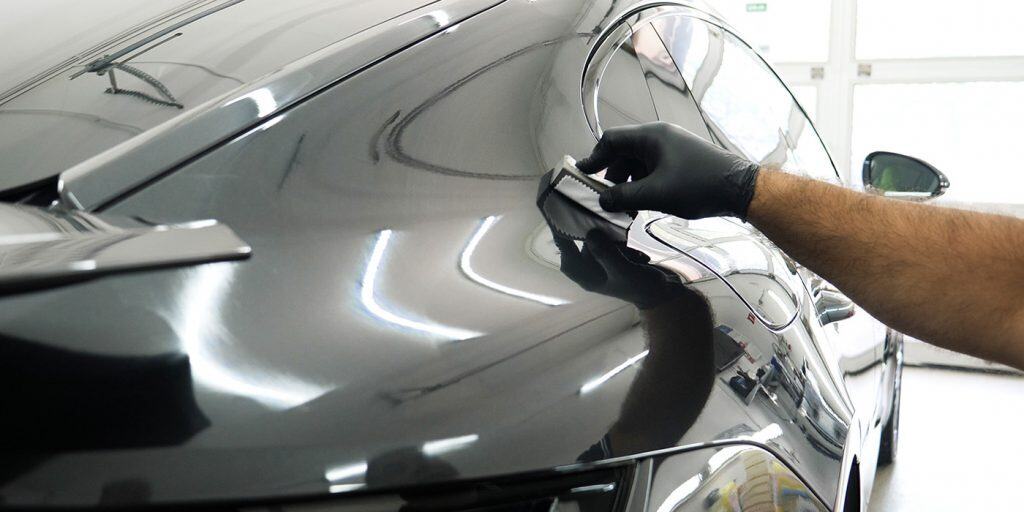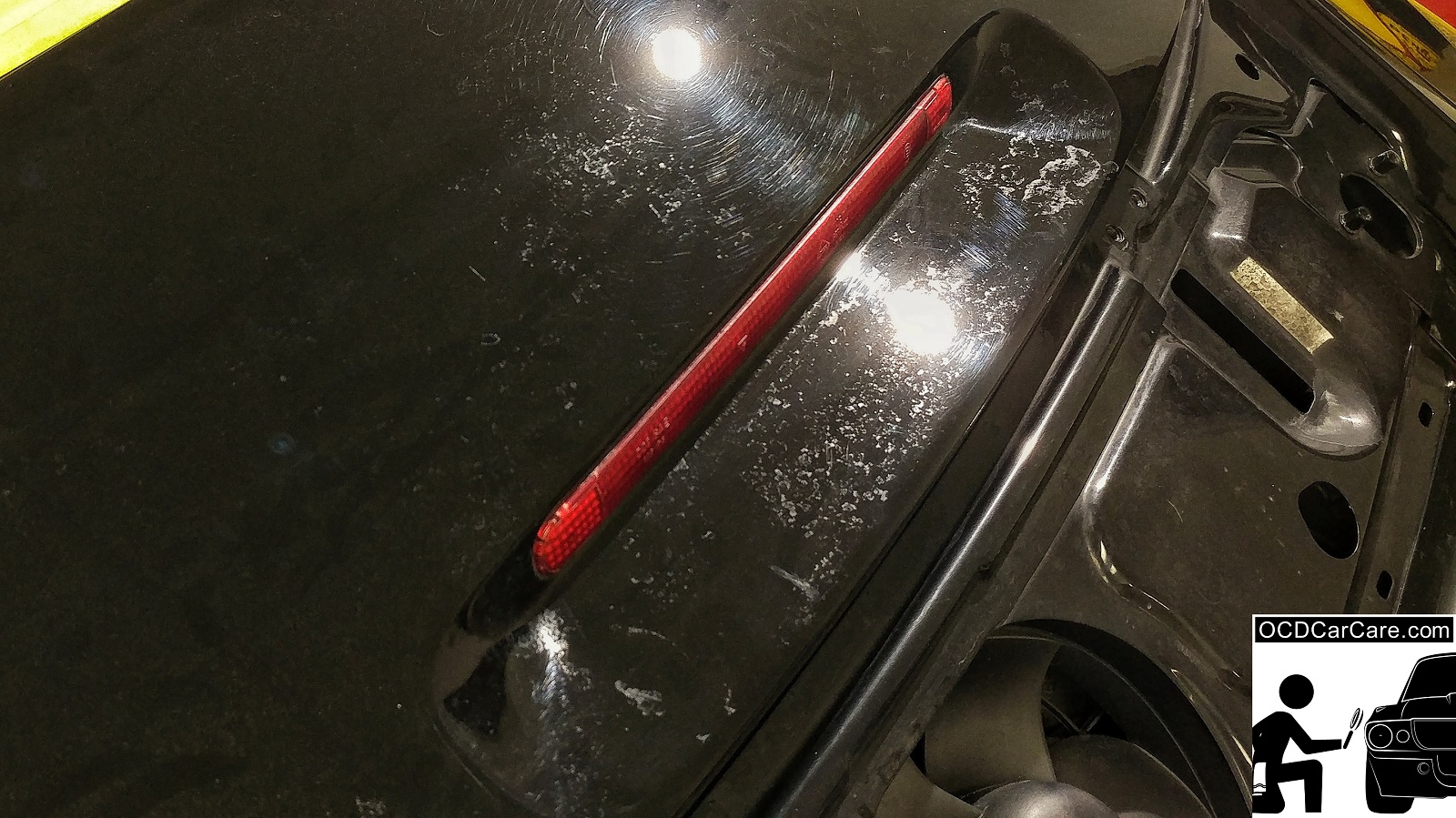Ceramic Coating vs. Conventional Wax: Which Offers Much Better Long-Term Protection?
The dispute between ceramic coverings and traditional wax for vehicle defense has gathered significant attention amongst automotive fanatics and experts alike. Ceramic finishes boast remarkable long life and resistance to ecological variables, yet the intricacy of their application raises concerns concerning access and practicality.
Summary of Ceramic Coating
Ceramic finish has actually acquired significant popularity among automobile enthusiasts and detailers alike because of its innovative protective qualities. This cutting-edge modern technology is developed to produce a resilient, hydrophobic guard over a vehicle's paint surface area, considerably boosting its resistance to environmental contaminants such as dirt, UV rays, and chemical discolorations. Unlike traditional wax, which supplies a short-term layer of defense, ceramic coverings bond at a molecular level with the paint, using long-lasting durability-- usually extending past 2 years with appropriate upkeep.
The application process includes precise preparation of the lorry's surface area, consisting of cleansing and polishing to make certain optimal bond. When applied, the coating treatments to develop a robust layer that not just adds deepness and gloss to the paint however likewise simplifies maintenance. With its hydrophobic homes, ceramic finish enables water and dust to slide off even more easily, lowering the regularity of washes and lessening the risk of swirl marks.
Moreover, ceramic layers are readily available in numerous solutions, permitting customers to choose items customized to their particular demands and preferences. On the whole, ceramic layer stands for a substantial development in paint security innovation, providing premium efficiency contrasted to traditional options.
Summary of Conventional Wax
Generally considered a staple in vehicle care, wax offers as a preferred choice for those seeking an uncomplicated approach to boost and shield their automobile's paint - ceramic coating. Automotive wax typically consists of all-natural ingredients, such as carnauba, or artificial compounds, developed to create a protective layer on the surface area of the paint. This layer not just boosts the lorry's gloss and radiate but also offers an obstacle versus environmental pollutants
The application of wax is typically user-friendly, making it obtainable for both experts and DIY enthusiasts. As soon as used, wax requires a healing period, after which it hardens to form a protective shell.
Nonetheless, while wax is reliable for boosting the aesthetic appeal of a car, it is necessary to note that the protection it uses might demand much more regular reapplication compared to alternative products, such as ceramic coverings. On the whole, traditional wax remains a favored option for those prioritizing ease of usage and prompt visual improvement.
Toughness and Long Life Contrast
While both ceramic finishes and typical wax deal safety benefits for vehicle paint, their longevity and longevity vary considerably. Standard wax, commonly made from all-natural carnauba or synthetic polymers, usually offers a protective layer that lasts roughly 3 to 6 months. This relatively short life expectancy necessitates regular reapplication to preserve ideal protection.
In comparison, ceramic coverings are engineered from advanced nanotechnology, creating a covalent bond with the paint surface area. This results in a robust, hydrophobic layer that can endure for two to five years, relying on the item and ecological conditions. The premium sturdiness of ceramic finishes is attributed to their chemical framework, which supplies boosted resistance to scrapes, her explanation UV rays, and oxidation.

Protection Against Ecological Elements
Protecting a car's paint from ecological elements is crucial for preserving its look and worth in time. Automobiles are continuously subjected to a variety of components, consisting of UV rays, bird droppings, tree sap, acid rainfall, and road grime, all of which can endanger the stability of the paintwork.
Ceramic coverings offer a robust defense against these environmental aggressors. Unlike standard wax, which can break down quickly under UV direct exposure, ceramic finishings form a long lasting, hydrophobic layer that withstands the dangerous effects of sunshine and toxic wastes. This advanced modern technology develops a chemical bond with the vehicle's surface area, providing exceptional defense that lasts for years, also in severe problems.
In comparison, ceramic finishings keep their protective qualities much longer, considerably lowering the danger of paint damages and ensuring that the lorry maintains its aesthetic charm. As a result, ceramic finishings are significantly identified as the remarkable choice for long-term security versus ecological factors.
Application and Maintenance Differences
The techniques of application and succeeding maintenance for ceramic coatings and traditional wax vary significantly, affecting the general customer experience and performance of each product. Ceramic finishes need an even more elaborate application process, generally entailing surface preparation that includes washing, decontaminating, and why not try this out brightening the car. Once the surface is ready, the ceramic finishing is applied in a regulated atmosphere, often needing specialist experience to make certain correct curing and bonding to the paint.

While both products enhance car appearance, the longer-lasting security used by ceramic coatings may warrant their initial investment, despite the more requiring application procedure. Alternatively, conventional wax continues to be a preferred selection for those seeking a simpler, albeit temporary, remedy.

Verdict
Finally, ceramic coatings demonstrate significant advantages over traditional wax in regards to resilience and environmental protection. With a lifespan expanding 2 to 5 years and remarkable resistance to UV rays, dust, and chemical spots, ceramic coatings use a much more effective option for long-lasting car upkeep. Although the application process might need professional knowledge, the resulting expense financial savings and decreased regularity of reapplication emphasize the value of ceramic layers for those looking for optimal car defense.
The argument in between ceramic coverings and conventional wax for car security has gathered substantial attention amongst automobile lovers and specialists alike. Unlike visit here traditional wax, which offers a short-lived layer of protection, ceramic layers bond at a molecular degree with the paint, providing resilient durability-- commonly prolonging past two years with correct upkeep.
While both ceramic layers and typical wax deal protective benefits for automotive paint, their durability and longevity vary considerably. For auto lovers seeking long-lasting defense, ceramic finishings offer an engaging benefit over traditional wax products.
In conclusion, ceramic coatings show considerable benefits over conventional wax in terms of longevity and ecological defense.